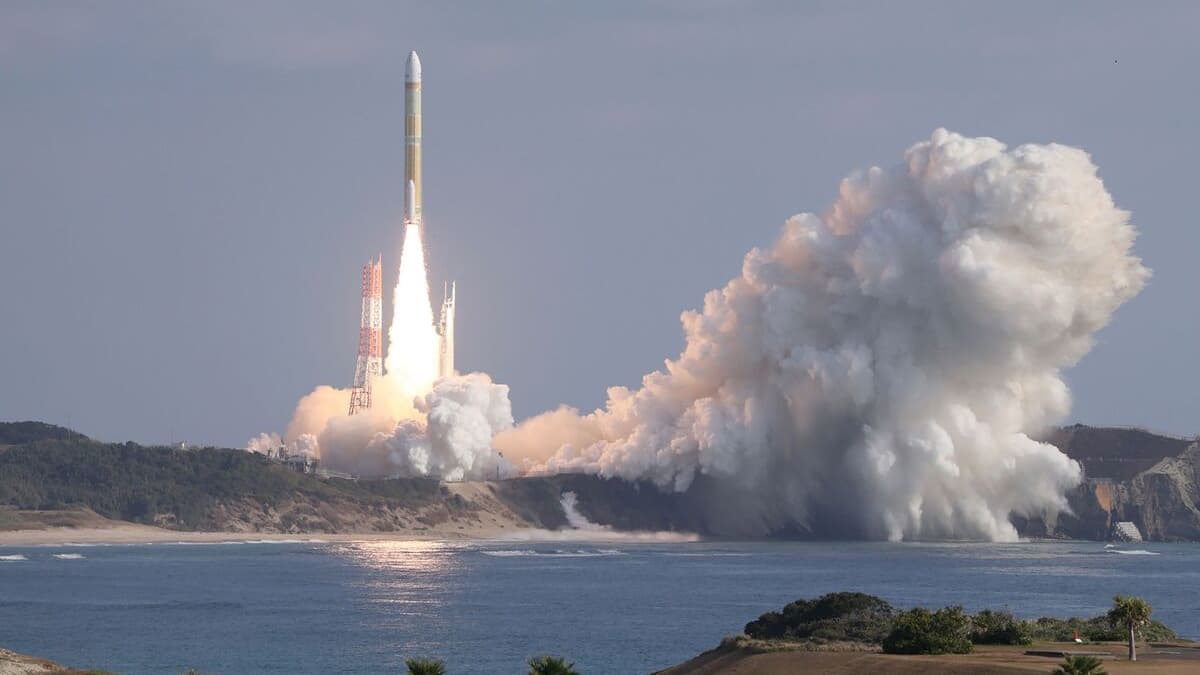After two initial failures last year, Japan's new H3 rocket successfully launched on Saturday, a major achievement for Japan, which relies heavily on this heavy launch vehicle to remain autonomous and competitive in the space sector.
• Also read: Japan postpones the launch of the H3 rocket due to weather
• Also read: Intervention from Earth: A robot enables operations to be carried out in space
• Also read: A new American company is preparing to launch to the moon
The rocket lifted off as planned at 9:23 a.m. local time (0:23 a.m. GMT) from Japan's Tanegashima space base in the southwest of the Japanese archipelago and was “launched into orbit” a few minutes later, a manager at the Japanese space agency Jaxa told AFP.
This success comes after that of SLIM (Smart Lander for Investigating Moon), a small Jaxa machine that was able to land precisely on the moon last month, a historic achievement for Japan.

AFP
The H3 is an impressive launch vehicle with a height of 63 m and a weight of 574 tons without payload. It is intended to allow Japan to make more frequent but also cheaper space flights (about six times a year) in order to compete with foreign launch vehicles such as the private Falcon 9 American company SpaceX.
Global demand for low-cost space launches is booming and competition in this niche is intensifying.
Jaxa's reputation for high flight reliability had been damaged by the previous setbacks of its H3 program.

AFP
In February 2023, this machine, developed jointly with the Japanese group Mitsubishi Heavy Industries (MHI), was unable to start due to a problem with the ignition of its boosters.
In a second attempt last March, the rocket initially managed a successful launch before deviating from its trajectory due to a failure of the second stage engines. The Jaxa had been forced to destroy it mid-flight.
These failures resulted in the postponement of several Jaxa space missions, including the MMX mission to explore the moons of Mars (a collaboration with NASA, the European Space Agency, France and Germany), which has now been officially postponed to 2026.
In addition, the mission of a small Jaxa launch vehicle, Epsilon, also failed shortly after its launch in 2022.
Many areas of application
The H3 is intended to allow Japan to “maintain its autonomous access to space,” according to Jaxa, whose previous heavy launch vehicle H-IIA, which began its career in 2001, is reaching the end of its lifespan.
“Japan is a relatively small nation that can carry out large space programs on its own,” but the country still has “big ambitions for space exploration,” notes British astronomer Adrian Michael Cruise, interviewed by AFP this week.
As “space payloads become increasingly heavier,” we need “increasingly powerful” machines, adds this emeritus professor of astrophysics at the University of Birmingham in the United Kingdom.
Capable of carrying up to 6 tons of payload in various orbits, the H3 should find application in various areas: telecommunications satellites, meteorology and even scientific research.
And Japan could perhaps use it in the future to ensure its defense at a time when geopolitical tensions in the Asia-Pacific region are high, especially given the North's nuclear program and missile and satellite tests. -Koreans, emphasizes Mr. Cruise.
Saturday's mission is primarily aimed at demonstrating the H3's functionality, but the machine also carries two small Earth observation satellites.
Specifically, like SpaceX's Falcon 9, the H3 is not a reusable launcher, but its advantage lies elsewhere.
“The H3 rocket is equipped with a unique and innovative first stage engine that provides greater thrust than other high-tech rockets,” Michele Trenti, director of the Melbourne Space Laboratory in Australia, told AFP.
“Lifting off as quickly as possible allows the second stage engines to transport spacecraft away from Earth more efficiently,” he adds.
This launch vehicle also “has the potential to be the most economical rocket for such missions,” says Trenti.

